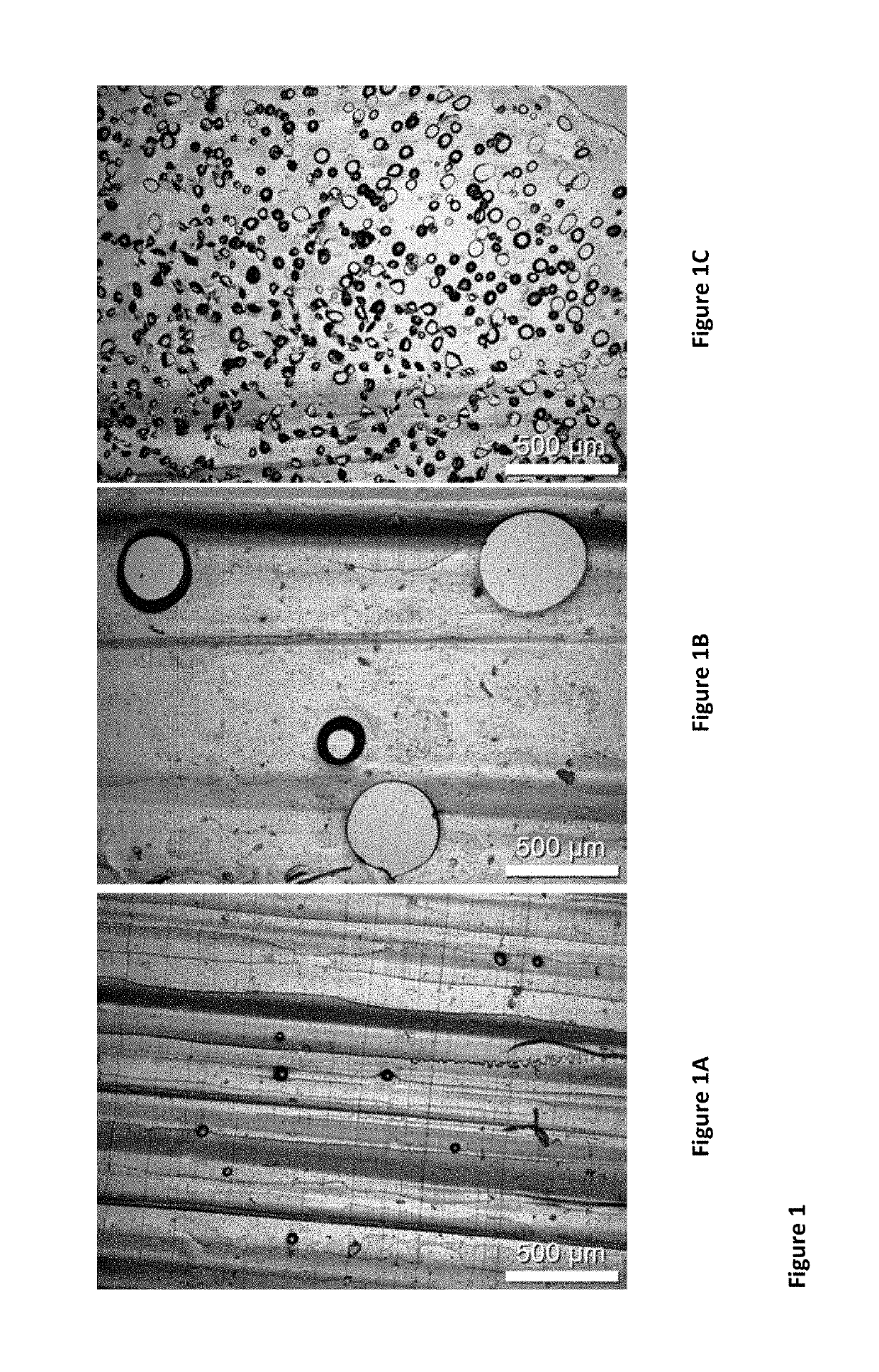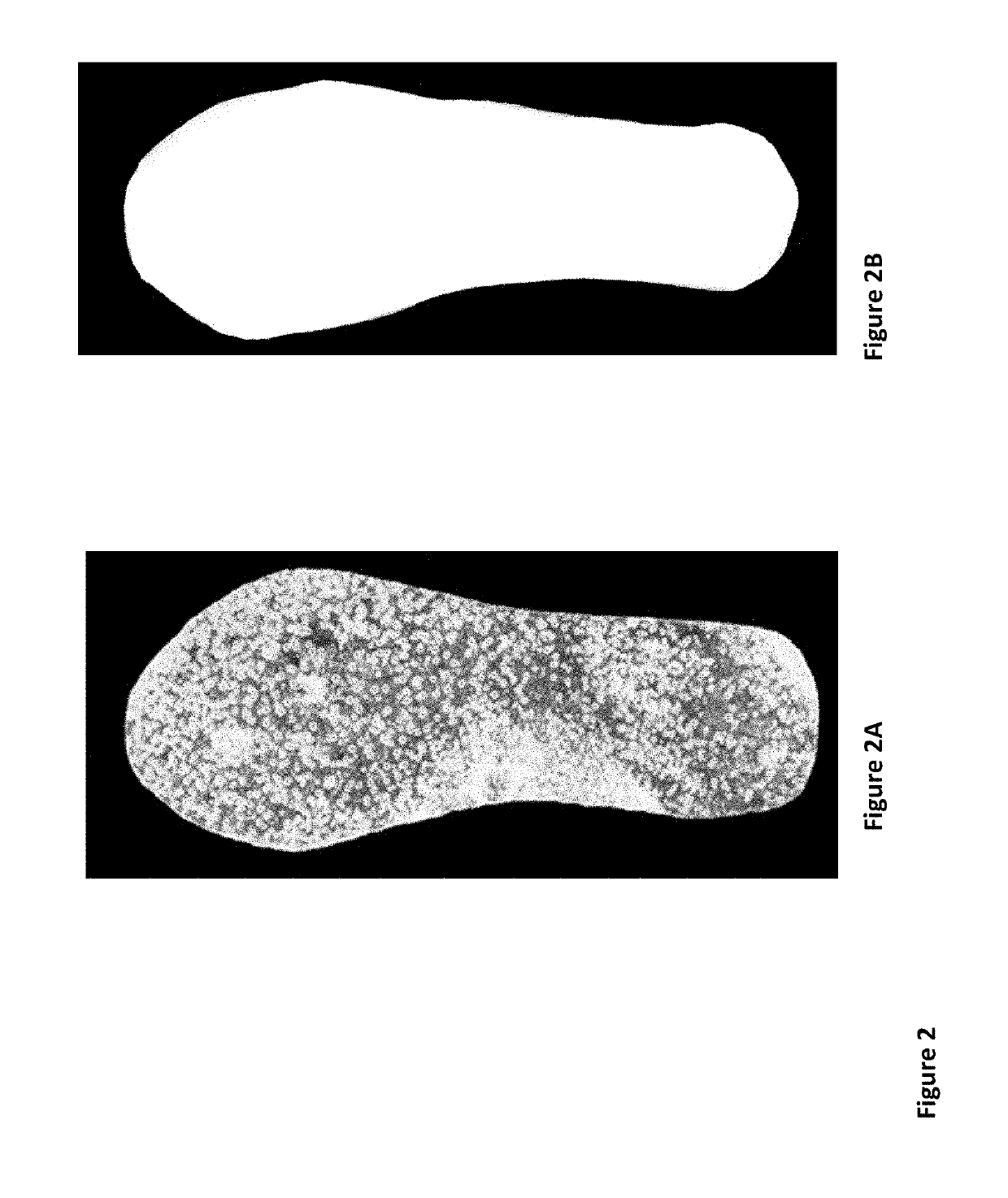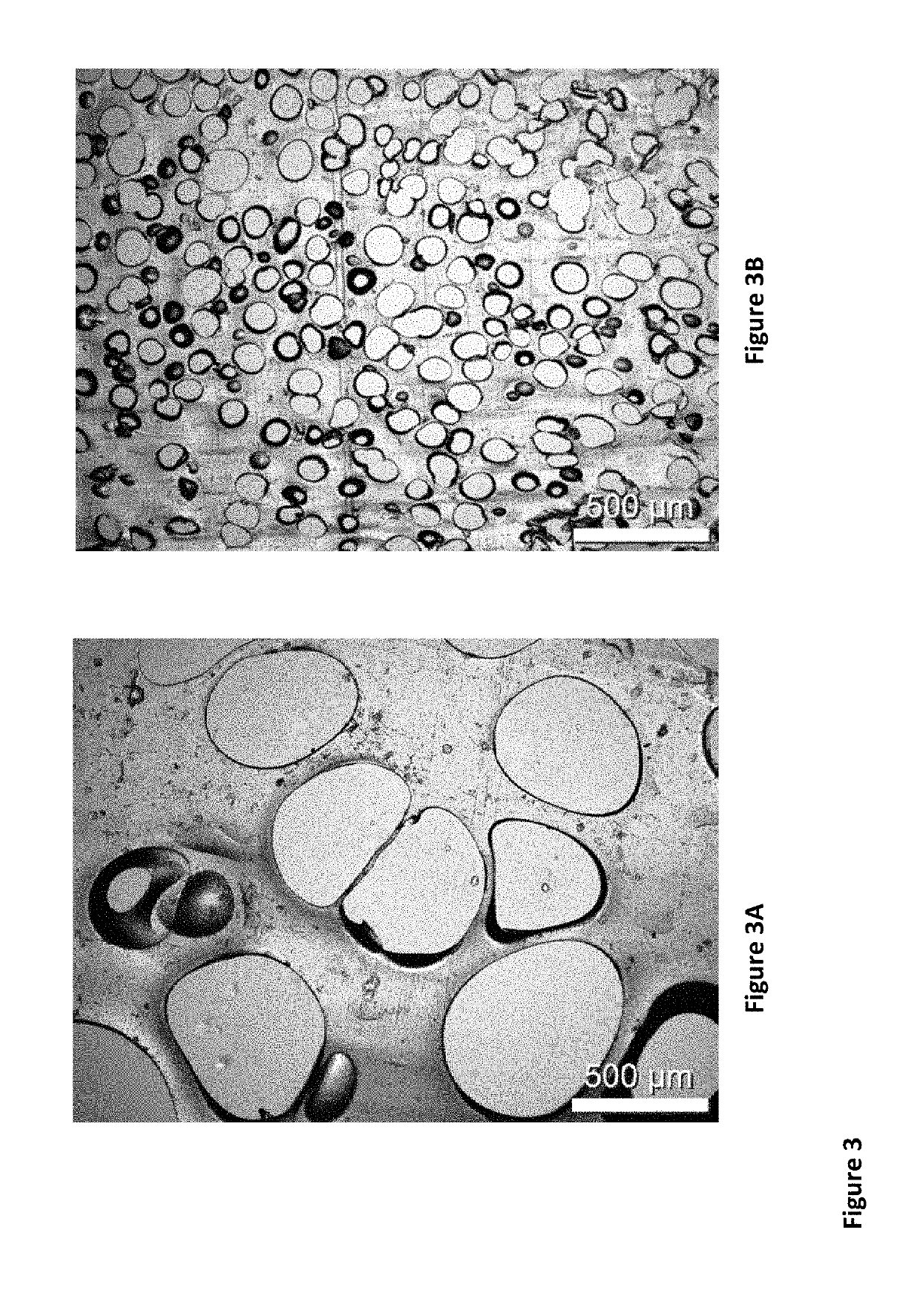Absorbent polymeric foam for shoe insoles
a polymer foam and insole technology, applied in the field of making absorbent polymeric foam, can solve the problems of hydrophobic composite articles, discomfort and malodorous effects, and the silica must attract and absorb moistur
- Summary
- Abstract
- Description
- Claims
- Application Information
AI Technical Summary
Benefits of technology
Problems solved by technology
Method used
Image
Examples
example 1
[0227]Preparation of a Stock Monomer Solution A.
[0228]Into a polyethylene vessel equipped with an agitator and a cooling coil, 1.21 kg aqueous 50 wt % NaOH solution and 1.81 kg of distilled water were added and cooled to 20° C. 0.516 kg of glacial acrylic acid was then added to the caustic solution and the solution was again cooled to 20° C. 4.11 g of polyethylene glycol monoallylether acrylate, 4.11 g of ethoxylated trimethylol propane triacrylate (TMPTA 15EO), and 1.03 kg of glacial acrylic acid were mixed and added to the first solution, followed by cooling to 4-6° C.
example 1-3
[0231]Nitrogen was bubbled through 119 g of Stock Monomer Solution A for 5 minutes. Under agitation 6.25 g of a 2.95 wt % sodium bicarbonate aqueous solution was added to the monomer. Then, the monomer solution was treated with a Hielscher UIP500 ultrasonic processor at an amplitude of 33% while stiffing on a magnetic stir plate. A 34 mm diameter ultrasonic probe was used and the tip submersed into the solution by about 1 cm to 2 cm. The treatment was performed for 4 s.
[0232]After stopping the ultrasonic treatment and under agitation, 1.25 g of a 1 wt % aqueous H2O2 solution, 1.88 g of a 2 wt % aqueous sodium persulfate solution, and 1.13 g of a 0.5 wt % aqueous sodium erythorbate solution were added into the monomer solution to initiate the polymerization reaction. The agitator was stopped after 5 s and the initiated monomer was poured into a round container with a diameter of about 15.5 cm and polymerized for 25 minutes. The thickness of the resulting polymer gel sheet was 4 mm to...
example 1-6
[0237]110 g of Stock Monomer Solution A was combined with 8.62 g polyethylene glycol 200 (PEG) and mixed. Nitrogen was bubbled through the monomer solution for 5 minutes. Under agitation, 6.25 g of a 2.95 wt % sodium bicarbonate aqueous solution were added to the monomer.
[0238]The monomer solution was treated with a Hielscher UIP500 ultrasonic processor at an amplitude of 33% while stiffing on a magnetic stir plate. A 34 mm diameter probe was used, and the tip submersed into the solution by about 1 cm to 2 cm. The treatment was performed for 4 s.
[0239]After stopping the ultrasonic treatment and under agitation, 1.25 g of a 1 wt % aqueous H2O2 solution, 1.88 g of a 2 wt % aqueous sodium persulfate solution, and 1.13 g of a 0.5 wt % aqueous sodium erythorbate solution were added into the monomer solution to initiate the polymerization reaction. The agitator was stopped after 5 s, and the initiated monomer was poured into a round container with a diameter of 15.5 cm and polymerized for...
PUM
| Property | Measurement | Unit |
|---|---|---|
| particle size | aaaaa | aaaaa |
| particle size | aaaaa | aaaaa |
| particle size | aaaaa | aaaaa |
Abstract
Description
Claims
Application Information
 Login to View More
Login to View More - R&D
- Intellectual Property
- Life Sciences
- Materials
- Tech Scout
- Unparalleled Data Quality
- Higher Quality Content
- 60% Fewer Hallucinations
Browse by: Latest US Patents, China's latest patents, Technical Efficacy Thesaurus, Application Domain, Technology Topic, Popular Technical Reports.
© 2025 PatSnap. All rights reserved.Legal|Privacy policy|Modern Slavery Act Transparency Statement|Sitemap|About US| Contact US: help@patsnap.com



